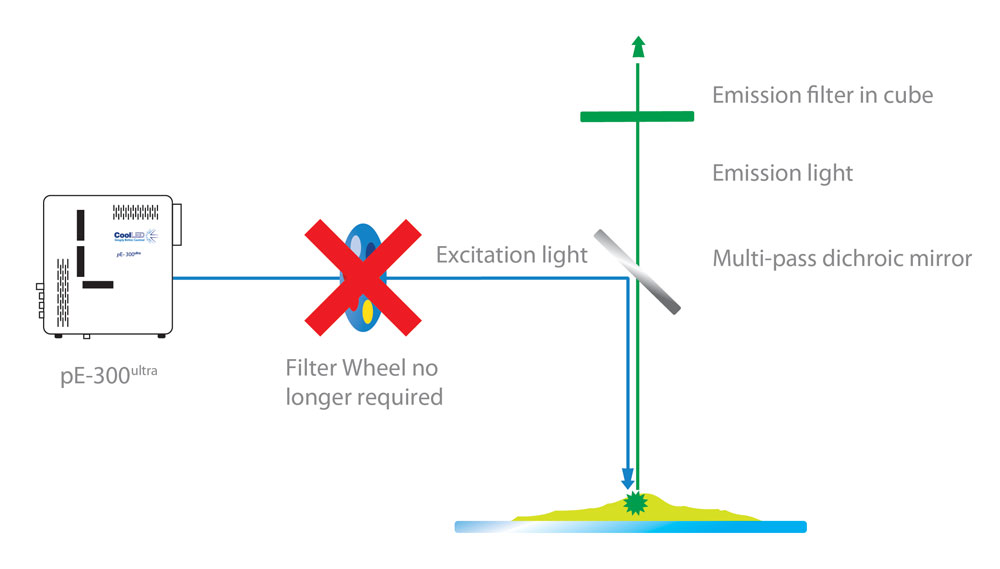LED illuminators for microscopes: the benefits of control
LED illuminators for microscopes overcome many of the problems associated with mercury and metal halide lamps, including the repeated exchange of bulbs and subsequent alignment. They are instead simple to fit, have instant on/off control, and stable and homogenous illumination which they retain over a long lifetime. But the simplicity and performance advantages are where LED illuminators for microscopes come into their own, significantly outcompeting traditional mercury-based systems.
This is due to the solid-state nature of LED illuminators for microscopes, which has had more impact on acquiring the perfect image than we could ever have imagined. LED illuminators for microscopes can be switched on and off with precise microsecond timing, which removes the need for a mechanical shutter and improves the temporal resolution of experiments for capturing high-speed events.
USB control and software integration allows the LED illuminator to be seamlessly controlled via imaging software for convenience and speed. Taking speed one step further is TTL control, where the LED illuminator is triggered by a TTL-out on a device such as a scientific camera. Such high-speed synchronisation enables the highest temporal resolution, while also vastly minimising phototoxicity and photobleaching.
For basic fluorescence imaging applications, a white light source such as the pE-300lite is the most cost-effective option. Precise irradiance control in 1% steps (0-100%) allows the irradiance to be optimally matched to the experiment, balancing brightness while protecting against photobleaching and phototoxicity, without the need for ND filters.
However, individual channel control has many benefits as with a broad spectrum of “white” light, the majority of this is unwanted and must be removed using optical filters. Many LED illuminators for microscopes such as the pE-300white and pE-300ultra are available which allow individual wavelengths to be controlled independently. In this way, the LED illuminator can be set to illuminate only the desired wavelength peaks matching a particular fluorophore’s excitation spectrum, increasing the signal to noise ratio and improving image contrast. This can be further enhanced with excitation filters, and the pE-300ultra allows inline excitation filters. This is ideal for high-speed imaging applications, replacing the latency and expense of a filter wheel.

LED illuminators for microscopes: a choice of light delivery
For many of our CoolLED illuminators, direct fit models are available. These increase irradiance, avoiding light loss through the liquid light guide. They also reduce cost of ownership by removing the need for ongoing replacement of the liquid light guide.
For certain applications, such as electrophysiology rigs where components such as LED illuminators for microscope systems must be kept outside of the Faraday cage, CoolLED LED illuminators are available as liquid light guide variants. Fibre-coupled variants are also available for applications such as optogenetics.
With modern LED illuminators for microscope systems, the industry is continually looking at better ways to deliver light to the sample plane. For example, our 33E adaptor allows CoolLED LED illuminators to connect directly to the Infinity Port of the Leica DMi8 microscope, increasing irradiance while reducing cost.
Not sure which LED illuminator to choose? Try it out!
If you’re not sure which LED illuminator to choose, we can provide a free loan unit for testing, with no obligation to purchase. Please contact us at [email protected] for more information.

